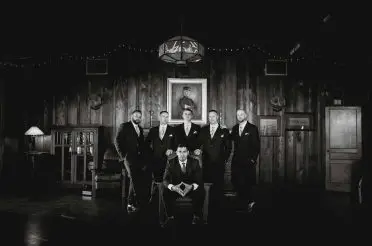As an Amazon Associate we earn from qualifying purchases.
SEO for wedding photographers can seem like a daunting item on your to-do list that seems to never quite makes it to the top. When you signed up to be a wedding photographer, figuring out the technicalities of SEO was probably NOT one of the perks.
You know it’s important and will help get clients to see your site online. But, knowing where to put your time can be overwhelming without a clear roadmap.
Breaking Down SEO for Wedding Photographers
I’m going to break down and simplify 3 areas for SEO for wedding photographers that are important for you to focus on if you’re just getting started or looking to improve your current SEO strategy. And, I’ll share actionable ways you can work on them today and start ranking higher in Google!
Think Like Your Customer
Before we dive into it, you will first need to frame your mindset. SEO is about understanding what your ideal clients are searching for.
Ask yourself, “What words are they using, what type of information are they looking for, what type of content would best help them?” Frame your mindset to continuously think about this as you work on your SEO.
1. Determine the Best Keywords
Keyword terms help search engines know what your site is about. Your keyword research will include thinking about and finding exact words and phrases people are typing into Google.
Your goal is not just about getting as many visitors as possible – it’s about getting the right visitors to your site. Traffic to your site is great, but at the end of the day, if it’s not helping to move your business forward and helping you become profitable, it’s not the traffic you want.
Ask yourself: What would my ideal client search for if they were looking for my product or service online?
Here are some keyword factors to consider:
- Relevancy: Is the keyword relevant to the content on your site? If a visitor arrives at your site from a certain keyword, are they going to find what they’re looking for? To help with relevancy, look for long tail keywords (phrases with 3 or more words) to be more specific in describing the product or service you offer.
- Search Volume: If no one is searching for your keywords, it won’t benefit you much to rank for them. Find keywords that a good number of people use, as this will help drive them to your site.
- Ranking Difficulty: How easy or difficult will it be to rank on Google for your keyword? You might find a keyword with a great search volume, but if the difficulty is too high, it may be challenging to rank on the first page of Google with it. While you don’t need to rank high on Google for all of your selected keywords, try to find some that do make it possible to get on page 1!
Select a Main Keyword
Ideally, find a main keyword term for your website, along with a main keyword term for each blog post you write that is related to your site’s term. There are various keyword tools you can use to conduct keyword research, including ones on Moz, Ahrefs, and Google AdWords.
Once you’ve found your keywords, implement them so you can slowly begin ranking! For your main website keyword term and each blog post main keyword term, consider placing them in the following areas:
- Title tag/ page tag: This is the title you give each page that is displayed on search engine results. This helps visitors and search engines know what that page is actually about. Try to keep this tag about 50-60 characters so it doesn’t get truncated when appearing on Google.
- Meta Descriptions: This is the short snippet that appears below your page title on search engine results. It won’t affect your ranking, but the copy here will affect who clicks on your page!
- Headings: Headings help to visually organize the content on your pages, and this is a great place to include your keyword. For example, in a blog post, try including the keyword in a H2 heading.
- Body: Place your main keyword in the body text of your pages and posts. If your website does not currently have much text content on a page, consider adding at least 300 words to it along with the keyword.
- URL: Consider including the main keyword in the URL when it makes sense. What is more descriptive, “/?p=123” or “/how-to-pick-the-perfect-dress”?
2. Optimize Images
Okay, still with me? :) The next SEO strategy for photographers focuses on your beautiful images (AKA the reason you signed up to be a photographer in the first place!).
When it comes to properly optimizing your images, there are a few things to keep in mind to help boost your SEO:
- Image size: Site speed is a ranking factor in SEO. Resize your images so they’re smaller and load faster. Google even provides a free tool to help you identify problem images called PageSpeed.
- Image name: Briefly describe what’s in the image. If you are working with lots of images at once, you can use a naming sequence. This might look like, “sunset-beach-engagement-001.jpg, sunset-beach-engagement-002.jpg, etc.” It is better to use unique descriptive names when possible; however, be sure to weigh this against the amount of time it will take you to write unique names for every image.
- Alt text: The alternative text describes your image. It helps Google understand the subject matter of your image and is the text that appears if the image is loading or broken. Ask yourself, “How would I clearly describe this image to someone over the phone who can’t see it?” Get descriptive here and include variations of your main keyword in this text.
3. Get Links
Links play a key role in how your site ranks on Google, as well as how visitors experience your site. Every click that a visitor takes is determined by the links you set up. In short, links can make or break the overall experience a visitor has! #nopressure :)
Here are a few different types of links to think about when it comes to SEO for photographers:
Outbound Links
Include links to other websites (not your own) that contain relevant information. If you’re publishing a blog post on a wedding you photographed at a certain venue, link out to the venue in the post. Try to include a few outbound links in every post.
Internal Links
Internal links point to other pages within your site. These can be useful for navigation, and internal links are also great for linking relevant content together, especially in blog posts. Try to include 2-3 relevant internal links in each post.
Link Building
In addition to outbound and internal links, a great way to boost your ranking is by getting other websites to link out to yours (commonly referred to as backlinks or inbound links). These are important because they show Google that another site believes your content is worth sending traffic to. So, simply put, the more backlinks you have, the more visible your site becomes on Google!
Final Thoughts
So are these the only areas you need to consider for your SEO? No. Will this give you a good starting point if you need to start your SEO or find areas to optimize? YES!
Also, while it’s totally possible to successfully master SEO on your own, that doesn’t mean you have to (or should!). I’m a HUGE believer in outsourcing things you shouldn’t be doing. There are some great SEO services for photographers available, should you choose to let a seasoned pro take care of the bulk of it and help your business out.
Regardless if you tackle SEO on your own or have someone help you, remember to place yourself in the mind of your clients and think about how they would be searching for you and interacting with your site!



Leave a Reply